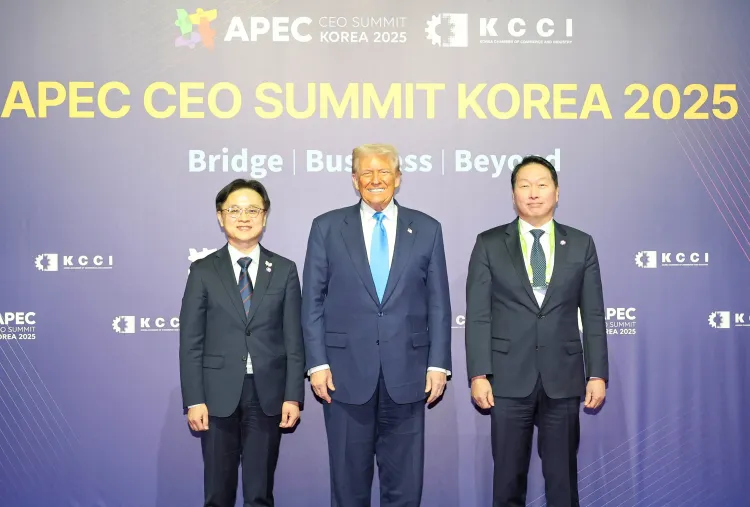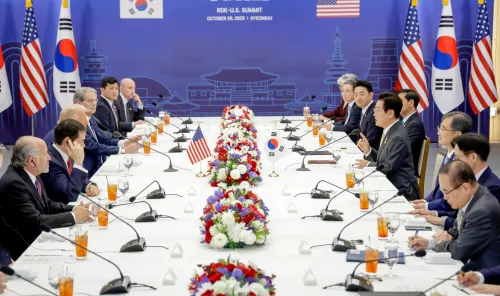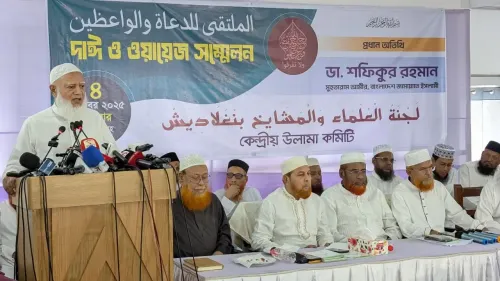What Does the New $350 Billion Investment Pact Mean for S. Korea and the US?

Synopsis
Key Takeaways
- South Korea and the U.S. have signed a MoU on a $350 billion investment.
- The deal includes $200 billion in cash and $150 billion for shipbuilding.
- Tariffs on Korean goods will be reduced to 15 percent.
- Key sectors targeted include energy and semiconductors.
- Profit-sharing is set at 90% for the U.S. after initial equal distribution.
Seoul, Nov 14 (NationPress) South Korea and the United States have officially entered into a memorandum of understanding (MoU) regarding Seoul's ambitious $350 billion investment commitment, which was made in exchange for reduced U.S. tariffs, the industry ministry announced on Friday.
The MoU was signed electronically by South Korean Industry Minister Kim Jung-kwan and U.S. Commerce Secretary Howard Lutnick, as reported by the Ministry of Trade, Industry and Resources.
On October 29, both parties finalized the specifics of the $350 billion investment pledge in relation to the decreased U.S. tariffs, according to Yonhap news agency.
The agreement includes $200 billion in cash investments, limited to $20 billion annually, plus an additional $150 billion dedicated to bilateral shipbuilding initiatives.
As of August 7, the U.S. has reduced the reciprocal tariff rate for Korea from 25 percent to 15 percent, with intentions to lower tariffs on Korean automobiles and lumber to 15 percent as well, as explained by the industry minister during a press briefing.
Korean pharmaceutical products will also now face a maximum tariff rate of 15 percent, while semiconductor tariffs will be set at rates that are "no less favorable" than those given to competitors like Taiwan.
The MoU outlines that both nations will identify projects to utilize the $200 billion investment package before the conclusion of U.S. President Donald Trump's term in January 2029, according to Kim.
This $200 billion will be allocated to "commercially reasonable" projects in advanced industries highlighted in a joint fact sheet released earlier by Seoul and Washington. Target sectors include energy, semiconductors, pharmaceuticals, critical minerals, artificial intelligence, and quantum computing.
Kim also indicated that a Consultation Committee, led by Korea's industry minister, and an Investment Committee, led by the U.S. commerce secretary, will oversee a special purpose vehicle (SPV) established by the U.S. to manage their collaborative projects.
This overarching SPV will supervise smaller SPVs for specific projects, each potentially managed by a Korean project manager, Kim elaborated.
Furthermore, the agreement stipulates that the U.S. will prioritize South Korean firms when selecting vendors or suppliers for these projects, according to Kim.
The MoU specifies that the U.S. will periodically present investment projects to Korea for evaluation, and Korea must decide to fund these projects within 45 business days.
In terms of profit distribution, the agreement states that profits from joint projects will be shared equally until a specified allocation amount is reached, after which 90 percent of profits will be awarded to the U.S. and 10 percent to Korea.









